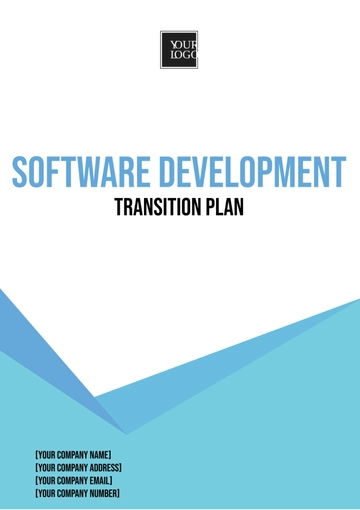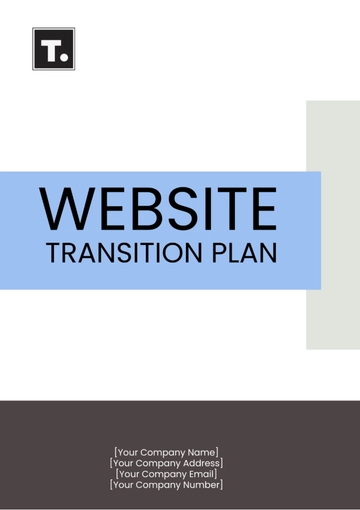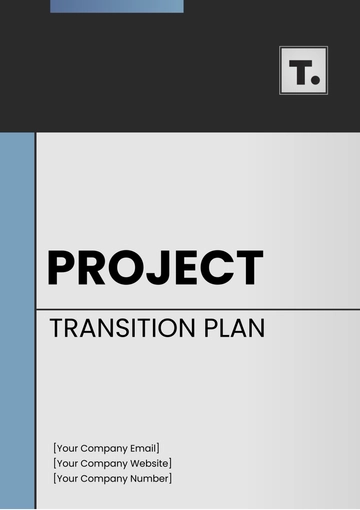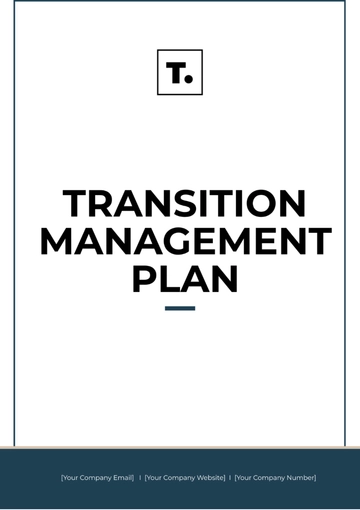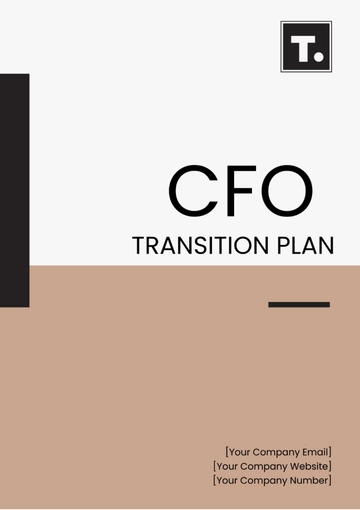CEO Transition Plan
Written by: [Your Name]
I. Executive Summary
This Transition Plan outlines the strategy and detailed process for seamlessly transitioning the Chief Executive Officer (CEO) role. This document will ensure a smooth and organized transition, mitigating disruptions to the company's operations, and fostering continued success. This plan will be executed over a planned period to allow for knowledge transfer, stakeholder engagement, and strategic alignment.
II. Purpose and Objectives
A. Purpose
To ensure a controlled, efficient, and effective transition of leadership in light of the current CEO's planned retirement, fostering stability and continuity within the organization.
B. Objectives
Maintain operational stability and performance during the transition period.
Ensure a comprehensive transfer of knowledge and relationships.
Prepare the organization for the successor's leadership style and strategy.
Mitigate risks associated with leadership transitions.
Foster engagement and communication with key stakeholders.
III. Timeline and Milestones
Milestone | Target Date | Responsible Party |
|---|
Announcement of CEO Retirement | [Date] | [RESPONSIBLE PARTY] |
Identify Transition Committee | [Date] | [RESPONSIBLE PARTY] |
Develop Transition Plan | [Date] | [RESPONSIBLE PARTY] |
Search and Selection of Successor | [Date] | [RESPONSIBLE PARTY] |
Formal Announcement of New CEO | [Date] | [RESPONSIBLE PARTY] |
Onboarding and Handover | [Date] | [RESPONSIBLE PARTY] |
Completion of the Transition Period | [Date] | [RESPONSIBLE PARTY] |
IV. Roles and Responsibilities
A. Current CEO
Provide guidance and support to the successor.
Facilitate knowledge transfer, including key relationships and organizational insights.
Assist in stakeholder and staff introductions.
B. Transition Committee
Identify and select the best candidate for the CEO position.
Oversee the implementation of the Transition Plan.
Communicate transition progress to the Board of Directors and stakeholders.
C. New CEO
Assimilate into the organizational culture and values.
Engage with key stakeholders including employees, customers, and partners.
Develop and communicate a strategic vision and immediate priorities.
V. Communication Plan
A. Internal Communication
B. External Communication
Inform stakeholders, including clients, partners, and investors, about the transition to ensure continued trust and confidence in the company’s stability and future direction.
VI. Risk Management
Identify potential risks associated with the leadership transition and develop mitigation strategies.
A. Risk Assessment
B. Mitigation Strategies
Comprehensive handover process.
Regular updates to stakeholders.
Engagement initiatives for key personnel.
Cultural integration planning for the new CEO.
VII. Monitoring and Evaluation
Regularly review the transition process to ensure it remains on track and achieves its objectives. Gather feedback from key stakeholders and adjust the plan as necessary.
VIII. Conclusion
This Transition Plan details the essential actions and tactics required to guarantee a smooth leadership shift, preserve stability, and promote ongoing achievement. Through dedicated implementation and active communication, we will manage this transition successfully.
Plan Templates @ Template.net














